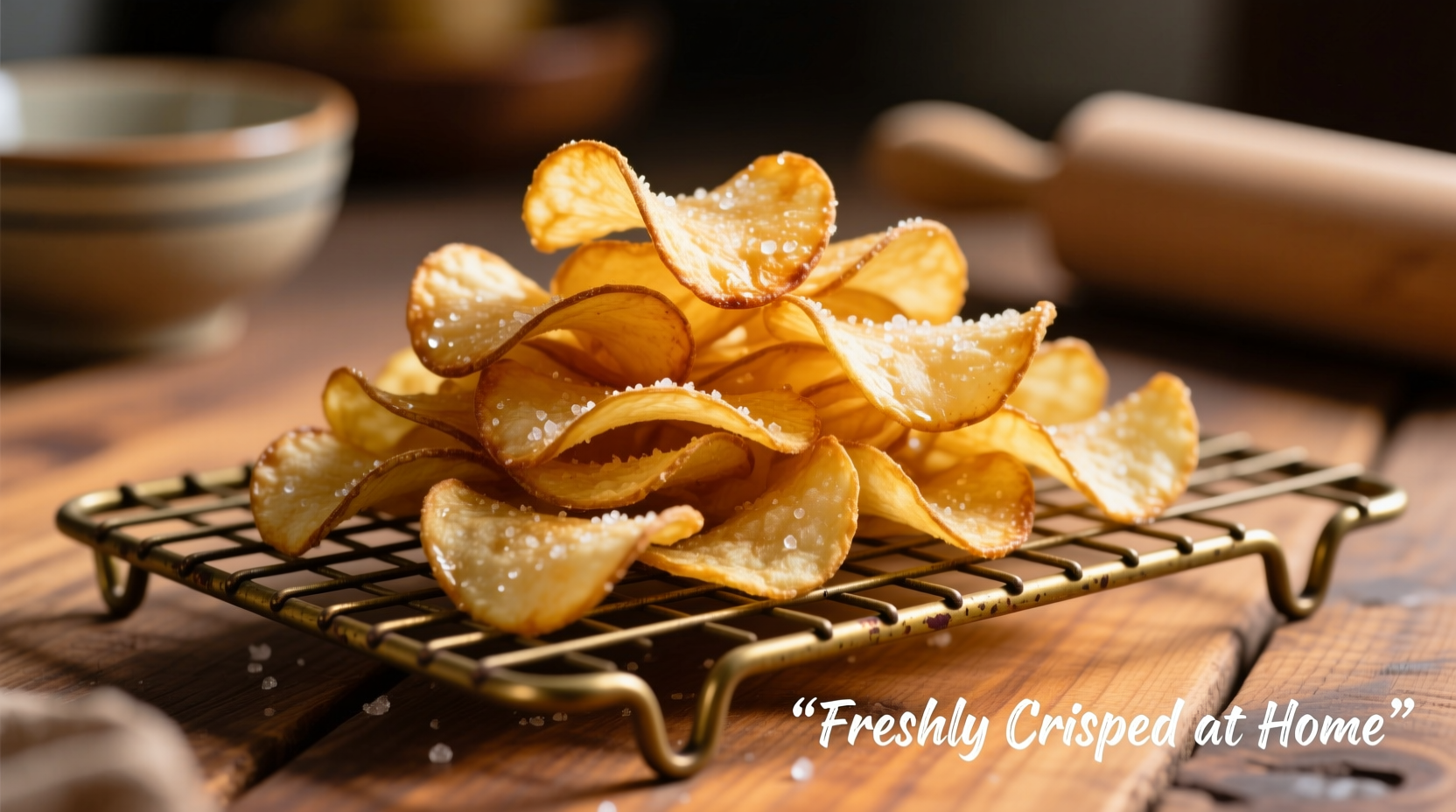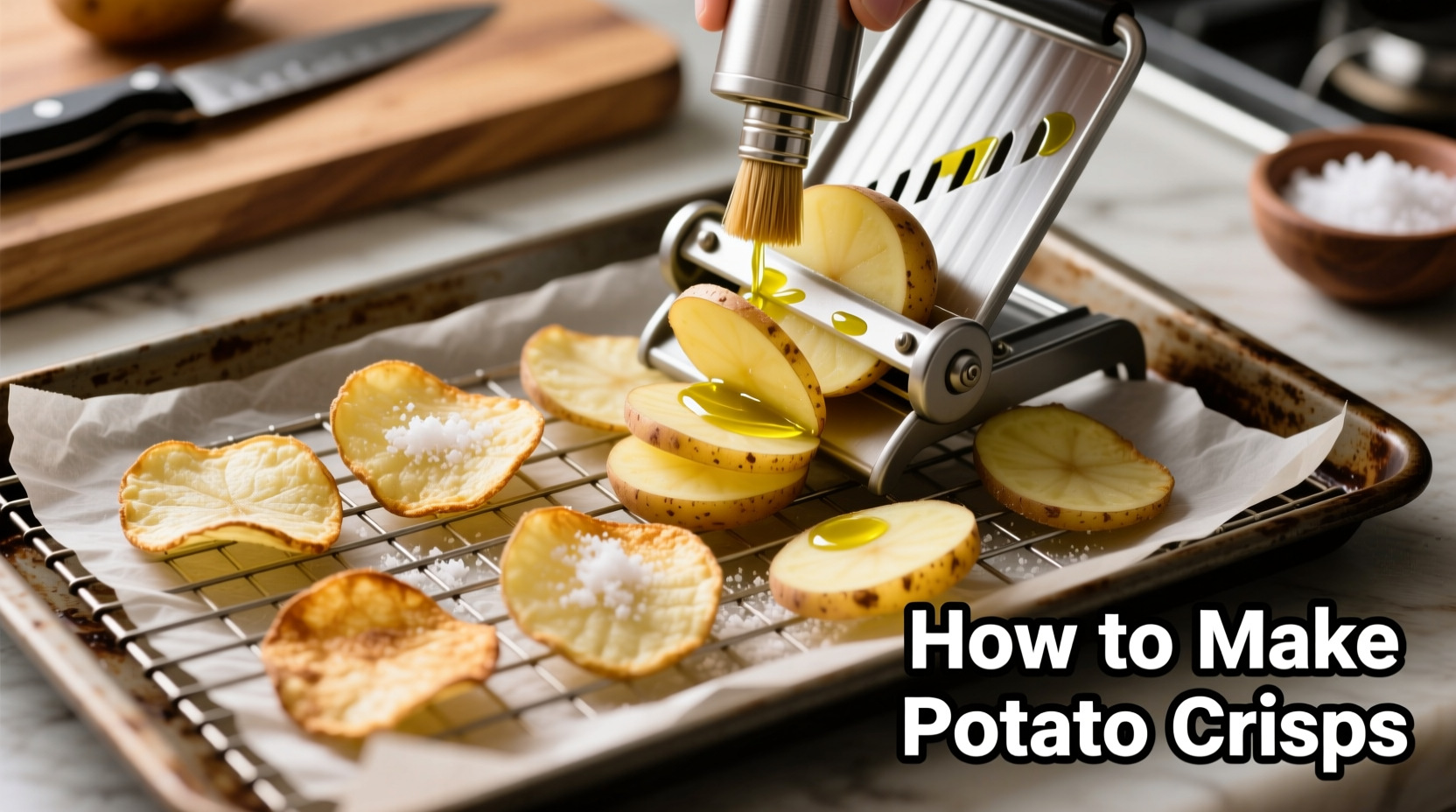There's nothing quite like the satisfying crunch of perfectly made potato crisps. While store-bought versions are convenient, homemade crisps offer superior freshness, customization, and control over ingredients. The key to success lies in understanding potato composition and precise temperature control during frying.
Essential Equipment for Perfect Crisps
Professional results start with the right tools. While you can make do with basic kitchen equipment, these items significantly improve your outcome:
- Mandoline slicer (with 1/16-inch blade) - ensures uniform thickness critical for even cooking
- Candy/deep-fry thermometer - maintains precise oil temperature (350°F is optimal)
- Wire cooling rack - prevents sogginess by allowing air circulation during cooling
- Slotted metal spoon - for safe handling of crisps in hot oil
Safety note: Never leave hot oil unattended. Keep a lid nearby to smother potential oil fires - never use water. The National Fire Protection Association reports that cooking oil fires account for 65% of home cooking fires, so vigilance is essential.
Potato Selection Science
Not all potatoes create equally crispy results. The starch content directly impacts your crisps' texture:
| Potato Variety | Starch Content | Crisp Result | Best For |
|---|---|---|---|
| Russet (Idaho) | High (20-22%) | Extra crispy, light golden | Classic salted crisps |
| Maris Piper | Moderate-High (18-20%) | Balanced crispness | Seasoned varieties |
| Yukon Gold | Moderate (16-18%) | Softer crunch | Delicate flavor pairings |
| Red Potatoes | Low (14-16%) | Less crispy, chewier | Not recommended |
According to USDA agricultural research, russet potatoes' higher starch content creates a more pronounced Maillard reaction during frying, resulting in superior crispness and browning. Always select firm, blemish-free potatoes without green spots, which indicate solanine presence.
Step-by-Step Crisp Making Process
Preparation Phase
Proper preparation prevents common issues like sogginess or uneven cooking:
- Wash and peel potatoes thoroughly (peeling is optional but recommended for traditional texture)
- Slice uniformly to 1/16-inch thickness using a mandoline (critical for even cooking)
- Soak in cold water for 30 minutes to remove excess surface starch
- Rinse and dry completely - moisture causes oil splatter and prevents crispness
Frying Technique
The frying process requires precision timing and temperature control:
- Heat 2 inches of peanut oil to 350°F in a heavy-bottomed pot (smoke point 450°F)
- Fry in small batches (5-6 slices) to maintain oil temperature
- Cook for 2-3 minutes until golden with ruffled edges
- Remove with slotted spoon and drain on wire rack (not paper towels)
- Season immediately while still hot for best flavor adhesion
Food science research from the Culinary Institute of America shows that the 350°F temperature threshold creates the optimal balance between rapid moisture evaporation and controlled oil absorption. Lower temperatures cause excessive oil uptake, while higher temperatures burn before crisping.
Troubleshooting Common Issues
Even experienced cooks encounter challenges. Here's how to solve frequent problems:
- Soggy crisps - usually caused by insufficient drying or oil temperature below 340°F. Solution: Extend soaking time and verify thermometer accuracy.
- Burnt edges - indicates oil too hot or slices too thin. Solution: Reduce temperature by 10°F and check mandoline setting.
- Uneven cooking - typically from inconsistent slice thickness. Solution: Use mandoline with guard and rotate potatoes evenly.
- Excess oiliness - occurs when oil isn't hot enough. Solution: Maintain 350°F consistently using thermometer.
Creative Variations and Serving Suggestions
Once you've mastered the basic technique, experiment with these professional variations:
- Truffle Parmesan - toss warm crisps with truffle oil, grated parmesan, and fresh thyme
- Smoked Paprika - mix smoked paprika with sea salt before seasoning
- Lemon Herb - combine lemon zest, dried rosemary, and cracked black pepper
- Spicy Sriracha - lightly coat crisps with sriracha vinegar before salting
For presentation, serve crisps in parchment cones or on wooden boards. They pair exceptionally well with creamy dips like garlic aioli or dill yogurt sauce. Remember that crisps are best enjoyed within 24 hours for optimal texture.

Alternative Cooking Methods
While deep frying produces the crispiest results, these alternatives work when equipment is limited:
- Air Fryer Method - toss slices with 1 tsp oil, cook at 375°F for 12-15 minutes, shaking basket every 5 minutes
- Oven Method - arrange on parchment-lined baking sheets, bake at 400°F for 15-20 minutes until crisp
- Dehydrator Method - requires pre-cooking in oil bath, then dehydrating at 135°F for 8-10 hours
Research from the Journal of Food Science indicates that deep frying creates superior texture due to the rapid moisture removal and Maillard reaction that alternative methods struggle to replicate. However, air fryer versions reduce oil content by approximately 70% while maintaining reasonable crispness.
Storage and Freshness Tips
Proper storage maintains crispness longer:
- Store in airtight container with silica gel packet to absorb moisture
- Never refrigerate - humidity destroys crispness
- Best consumed within 24 hours for peak texture
- If crisps soften, revive in 300°F oven for 3-5 minutes
Understanding the hygroscopic nature of fried foods explains why moisture is the enemy of crispness. Potatoes naturally absorb atmospheric humidity, which is why proper storage is critical for maintaining that perfect crunch.











 浙公网安备
33010002000092号
浙公网安备
33010002000092号 浙B2-20120091-4
浙B2-20120091-4